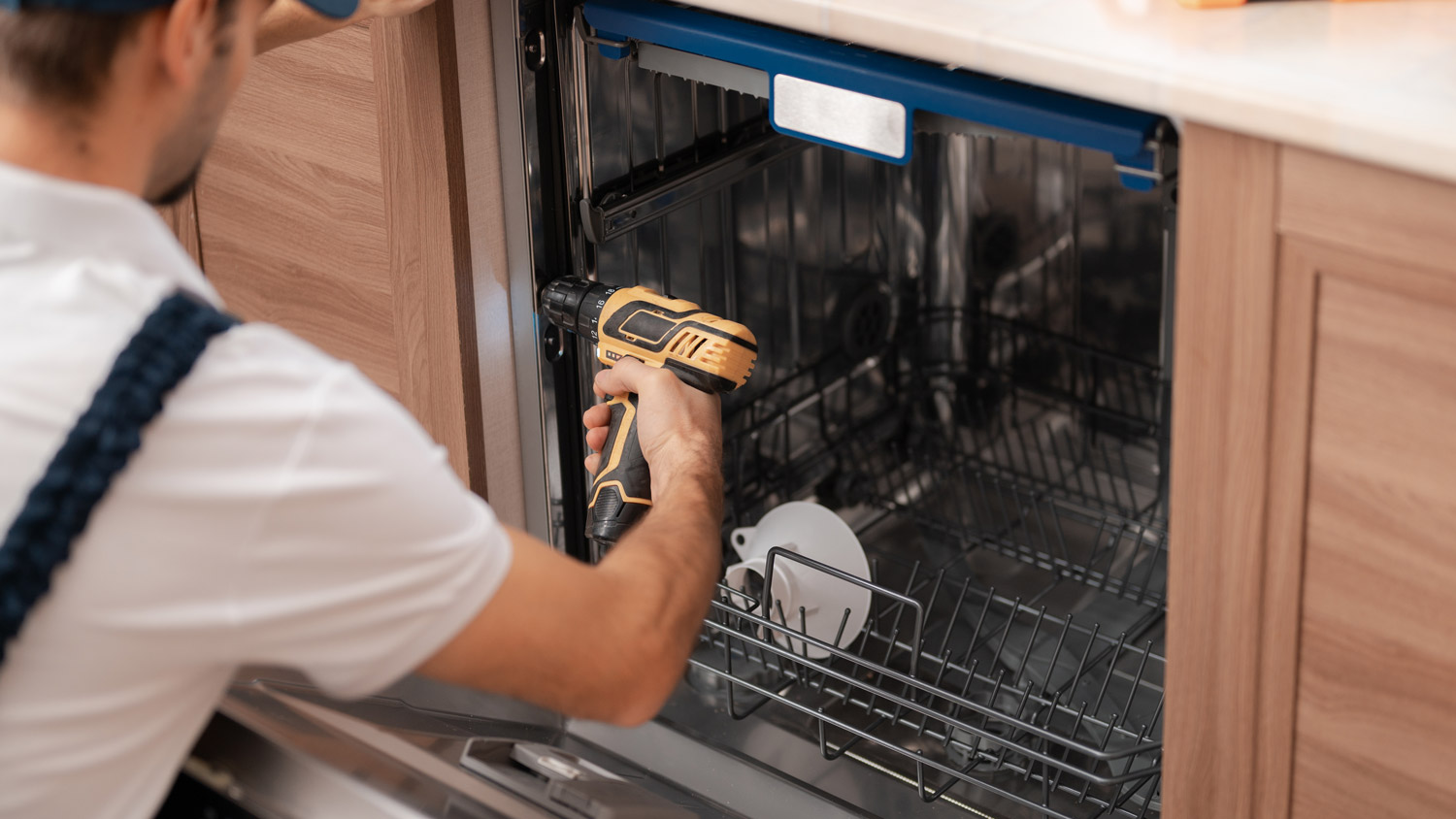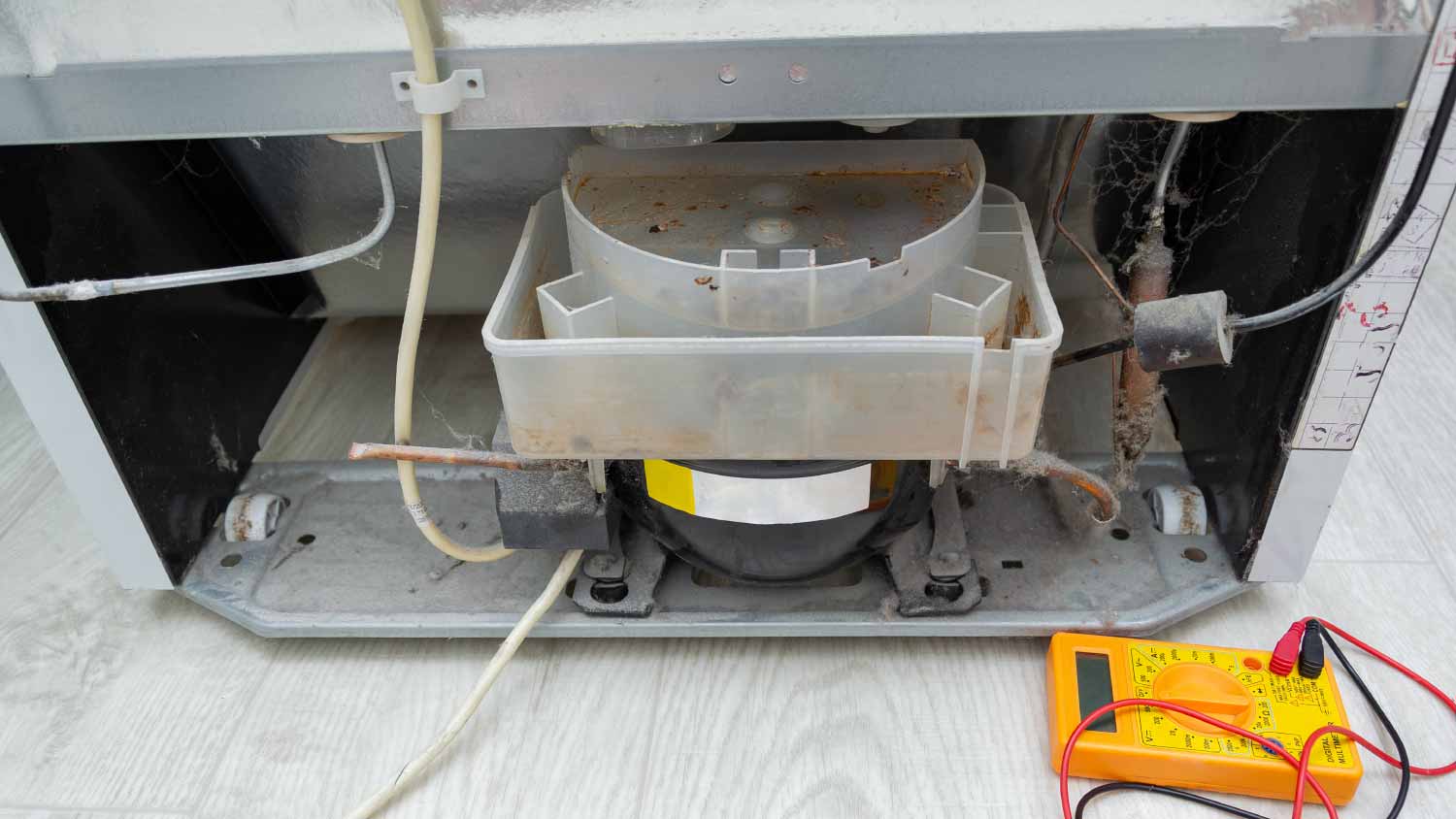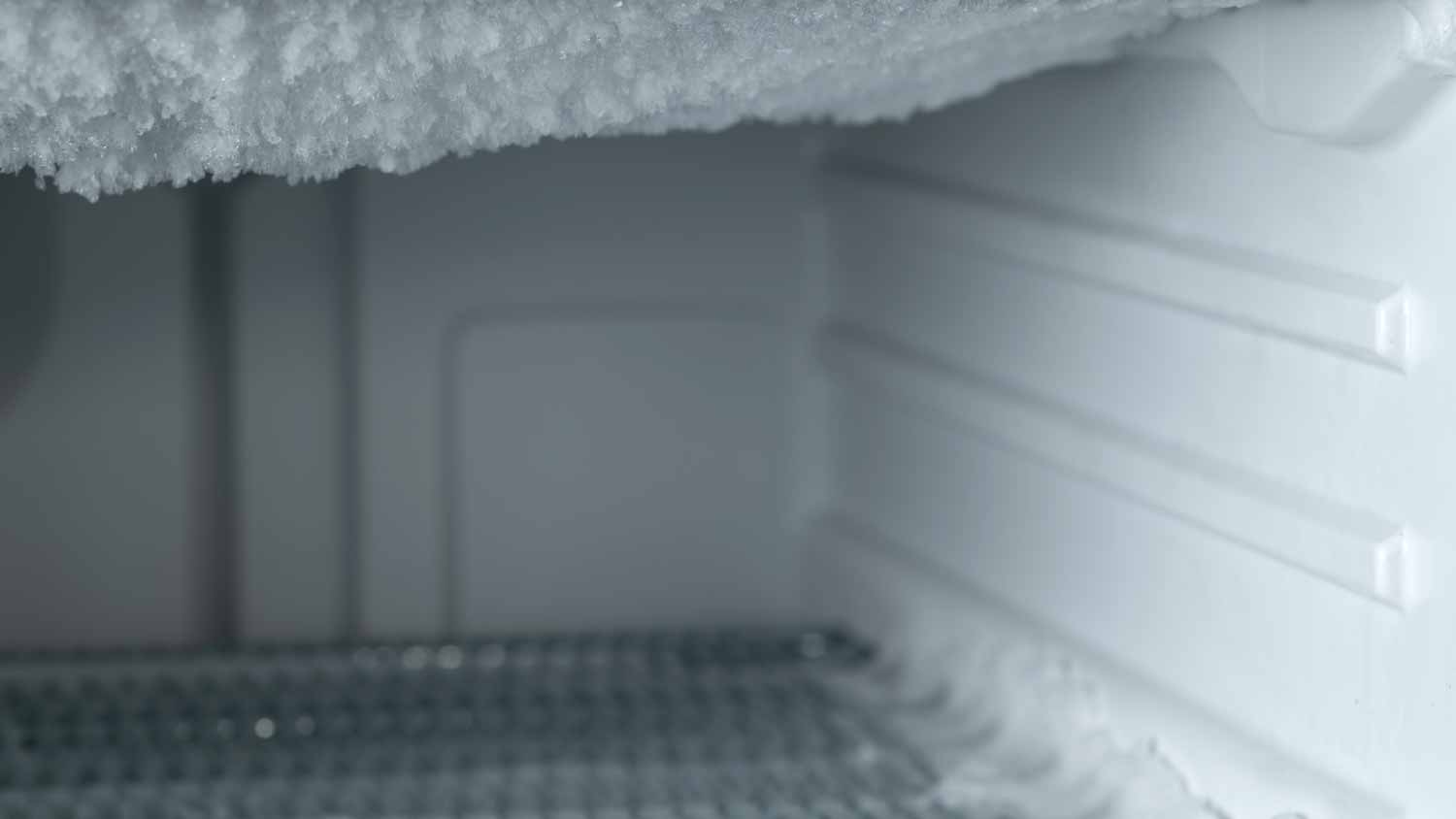
Discover the average dishwasher installation cost, key price factors, and tips to save on your project. Get transparent, expert-backed estimates.
Don’t let this common problem spoil your mood (or your dinner)


Leaks can affect any fridge, including side-by-side models.
Common causes include full drain pans or clogged drain lines.
Many leak causes can be easily fixed at home.
Defrosting your fridge and freezer is an easy, affordable troubleshooting step.
A leaky refrigerator is no fun—especially if the leak makes its way into your freezer. Unwanted frost and ice build-up can decrease the appliance’s efficiency, make a mess in your house, and worst of all, ruin your ice cream. There are several common reasons a side-by-side refrigerator might leak water inside the freezer, and the good news is, lots of them are fixable at home. If not, your local fridge repair pro can help get you back up and running.

If you’ve noticed a puddle of water (or, by the time you got to it, ice) in your freezer, there’s a chance that condensation is being backed up due to a full or misplaced evaporation pan. This pan sits under your fridge and catches the wastewater produced by refrigeration, which normally evaporates without your intervention.
However, a noticeable leak could mean there’s a problem, and your pan is a good place to start troubleshooting. The easiest way to know exactly where to look is to turn to your owner’s manual, but many drain pans are hidden behind a refrigerator’s front kick panel. When you remove this panel, you can pull out the evaporation pan. Note: For this and all troubleshooting steps in this article, unplug your refrigerator before proceeding, for safety.
If it’s in the wrong place or full to overflowing, you may have found the first clue to the problem—and although emptying it may not solve the issue entirely, it’s a good start. Next, we’ll keep looking for the leak’s original source.
One of the most common reasons for any fridge leak is a clogged condensation drain. This all-important outlet is often found just above those drawers meant to keep your produce crunchy—or, you guessed it, in the freezer. Some condensation is expected in normal fridge operation, which is why manufacturers include a drain (and an evaporation pan). However, it’s unfortunately possible for that drain to become clogged with food particles, ice, or other nasties.
Once again, turn to your owner’s manual for the most efficient way to find your model’s condensation drain. You may need to move food items out of the way or use a flashlight to find it.
If you see ice build-up in the drain, pour about a pint of a mixture of warm water and white vinegar into it to clear the frost away. (You’ll need to re-empty your evaporation pan after this step.)
If there’s no visible ice, but you suspect (or see) a clog, the next step would be to snake the condensation line—though you may not have the equipment on hand to do so yourself. That’s what the pros are for!
Many modern refrigerators are connected directly to a water line in your home. This line is used to power your built-in ice maker or water dispenser.
Of course, the water line is another part of the fridge that can become frozen or otherwise dysfunctional. If this is your problem, chances are you’ve already noticed that your ice maker or water dispenser isn’t working properly. The fix could require a more in-depth repair that calls for professional assistance.
That said, you can always start by defrosting your fridge for 24 hours and seeing if the features connected to the water line work better afterward. Obviously, you’ll need to stash any perishable foods in a cooler or another refrigerator to avoid spoilage. But overall, defrosting is one of the cheapest and most accessible fixes to attempt for any refrigerator problem.
While we’re on this step, check the water dispenser, too—loose parts could also result in a leak.

Even if your refrigerator is not connected to a water line, a build-up of frost and ice can cause leaking problems. If you see a noticeable layer of ice in your freezer, it might be time for a defrost. Best case scenario, going through this process will also solve your leak issue.
One of the simplest parts of your refrigerator can also cause the biggest issues. The door seal helps ensure the cold your fridge is producing stays inside, but it also keeps excess moisture from the atmosphere out.
If you can easily pull a sheet of paper or dollar bill out of your closed refrigerator door, the seal probably needs to be replaced. Since it serves such an important function, that replacement is a job best left to professionals.
Just like people, refrigerators need to feel level and grounded to operate at their best. If your fridge is tilted, a leak could occur—so use a level to double-check that it’s nice and even. If you notice that it’s not level, or that it wobbles when you gently push it, enlist the help of a strong friend to lift the fridge up one side at a time and adjust its feet.
From average costs to expert advice, get all the answers you need to get your job done.

Discover the average dishwasher installation cost, key price factors, and tips to save on your project. Get transparent, expert-backed estimates.

Installing a gas dryer can help you save on your monthly energy bills. Depending on whether you need a new gas line, gas dryer installation costs will vary greatly.

If your dated appliances don't impress, it's time for a refresh. We break down the cost to refinish appliances, including ovens, refrigerators, washers, and more.

Learning how to determine washer box height in your laundry room will come in handy when you need to access your washer connections.

Finding the right pro to install your new washer and dryer will help the machines work better, last longer, and ensure everything is connected correctly.

Looking for a new washer or dryer to keep your clothes fresh and clean? Learn how to choose a washer and dryer by knowing what to consider.